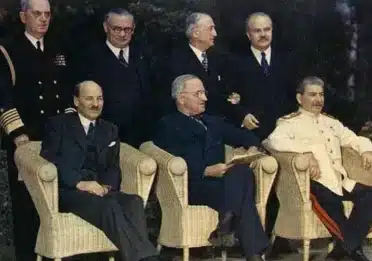Trail of Tears: Forced Migration of the Cherokee People
The 19th century witnessed a disturbing chapter in American history as the U.S. Government exploited treaties and enacted the Removal Act of 1830 to displace Native Americans from their tribal lands, culminating in the tragic Trail of Tears. Despite treaties and Supreme Court rulings, the government often violated its own agreements to facilitate westward expansion, forcing thousands of Native Americans, including the Cherokee, on the harrowing Trail of Tears, where many lost their lives.
 |
| Image Credit: Flickr: The Struggle against Indian Removal |
The Trail of Tears refers to the forced migration of the Cherokee people from their ancestral lands in Georgia, Alabama, Tennessee, and North Carolina to new territories west of the Mississippi River. This arduous journey, occurring in the fall and winter of 1838–1839, resulted in the tragic death of one-fourth of the Cherokee population.
The Trail of Tears was a result of the U.S. government’s policy of Indian removal, which aimed to relocate Native American tribes to lands west of the Mississippi River. The government wanted to acquire the fertile lands inhabited by these tribes for white settlement and economic development.
💻 Table of Contents:
- Trail of Tears: Background and Causes
- President Jackson and the Indian Removal Act
- The Trail of Tears: Forced Removal and Devastation
- Tragedy and Injustice: Native American Forced Journeys
Trail of Tears: Background and Causes
Before 1838, Native American nations in the United States had fixed boundaries, but these were often changed due to pressure from settlers and the threat of military force in new U.S. territories. As these territories transformed into states, state governments aimed to eliminate the boundaries of independent Indian nations within their borders, seizing their lands. The situation worsened with U.S. population growth, the expansion of slavery, and the rise of cotton cultivation after Eli Whitney’s cotton gin invention.
Many southeastern Native Americans were economically integrated into the regional economy, participating in plantation work and owning slaves. Unfortunately, during the forced removal, these enslaved individuals were also uprooted and relocated alongside their indigenous owners.
The Louisiana Purchase (1803) had a significant impact on Native American people. The United States gained control of land where many Native American communities lived. This led to a long process of making agreements, called treaties, with Native American tribes that lasted for more than 150 years. Unfortunately, throughout history, the U.S. government did not always give fair compensation to Native Americans when they had to give up their land west of the Mississippi River.
 |
| Image Credit: Creazilla: Cherokee Indian Memorial |
Presidents Thomas Jefferson and James Monroe supported the idea of relocating Indian tribes in the Southeast to lands west of the Mississippi River, which ultimately laid the groundwork for the forced migration.
In 1786, the United States created its first Native American reservation and treated each tribe as a separate nation. This policy lasted for more than 100 years. However, some people opposed this approach. President James Monroe, in his second inaugural address in 1821, criticized this policy, saying it made Native Americans feel good but actually held back their progress and often led to their destruction.
Monroe also acknowledged that America’s expansion westward had forcefully pushed Native Americans off their lands, causing them great loss. He believed that the nation owed them kindness and fairness. Despite expressing concern for Native Americans, Monroe’s administration still carried out their removal from states north of the Ohio River.
It was Major General Andrew Jackson who took decisive action.
President Jackson and the Indian Removal Act:
President Andrew Jackson played a pivotal role in the Indian removal campaign, which began as early as the Battle of Horseshoe Bend in 1814. Under Jackson’s leadership, the Creek Indians were forced to surrender vast territories. Jackson’s push for Indian removal gained momentum, and by the time he became president in 1829, he actively encouraged Congress to pass the Removal Act of 1830.
 |
| Imge Credit: Picryl: Battle Horseshoe Bend 1814 |
This act provided a systematic approach to Indian removal, granting land west of the Mississippi River to tribes willing to give up their homelands. Despite promises of financial assistance and protection, force and threats were employed to persuade tribes into signing removal treaties. By the end of Jackson’s presidency, almost seventy removal treaties were signed, resulting in the relocation of nearly 50,000 eastern Indians to Indian Territory—later known as eastern Oklahoma.
💻 You May Also Like: :
- American Civil War: A Turning Point for Democracy
- Manifest Destiny: Geopolitical Doctrine behind U.S. Expansion
The Trail of Tears: Forced Removal and Devastation
The Cherokee Nation resisted this forced relocation, challenging Georgia laws restricting their freedoms. Chief Justice John Marshall, in his ruling on Cherokee Nation v. the State of Georgia (1831), stated that the Indian territory is considered to be a part of the United States. He also declared that the Native American tribes were “domestic dependent nations” and compared their relationship to that of a ward and their guardian.
In simpler terms, this means that the tribes were seen as being under the protection and care of the United States government. The government had a responsibility to look after the tribes and make decisions on their behalf, similar to how a guardian takes care of a ward or someone who needs assistance.
However, the Supreme Court reversed its stance in the following year, claiming Indian tribes were sovereign and immune from state laws. On the other hand, In 1835, President Jackson negotiated the Treaty of New Echota with a Cherokee representative, securing a signature from the Cherokee that allowed for the agreement’s implementation. This treaty granted the Cherokee two years to move to Indian Territory (now Oklahoma). But the treaty was opposed by most Cherokee people, as it was signed by a minority faction and not approved by their elected leaders.
Despite the opposition, the treaty was ratified by the Senate in 1836, becoming the legal basis for the Trail of Tears. The U.S. government, with the help of state militias, forced the majority of Cherokees to leave in 1838. The journey was marked by harsh conditions, including heavy rains, snow, freezing temperatures, and suffering.
 |
| Image Credit: ndla.zendesk.com |
The Cherokee were not the only tribe affected by forced removal. The Creek, Choctaw, Seminole, and Chickasaw nations were also relocated under the Indian Removal Act of 1830. Thousands of Native Americans were removed from their ancestral lands, resulting in immense hardship and loss.
The Cherokee negotiated the Treaty of New Echota in exchange for land in modern Oklahoma and a monetary payment. However, many Cherokee felt betrayed by their leaders for accepting the deal. Tens of thousands of Cherokee and other Native Americans were removed from their lands by the end of the decade.
This period of forced removal is known as the Trail of Tears, a devastating event that displaced and caused the deaths of a significant portion of the indigenous population in the southeastern United States.
Tragedy and Injustice: Native American Forced Journeys
Under President Martin Van Buren, federal agents rounded up the Cherokee in late 1837 and early 1838, forcing them off their land and into detention camps in Tennessee and Alabama. Some Cherokee managed to hide in the Smoky Mountains, and their descendants are now known as the Eastern Band of Cherokee Indians.
In October, 1838 their forced march, known as the Trail of Tears, began. They marched for over four months, poorly equipped, alongside wagon caravans and endured harsh winter weather and blizzards. Their routes covered around 1,609 kilometers (1,000 miles), passing through parts of Tennessee, Kentucky, Illinois, Missouri, and Arkansas. Some traveled by water along rivers until they reached present-day Oklahoma. Along the trail, funerals and burials were held at every stop. The death toll from internment camps, the migration, and its aftermath exceeded 4,000 out of a population of over 16,000. Many died from exposure, malnutrition, diseases, and exhaustion.
 |
| Image Source: Google: Choctaw Village House |
Similar conditions and journeys affected other Native American peoples, with as many as 100,000 people forcibly removed from their homelands. The Choctaw, for example, had their own Trail of Tears. These journeys have come to represent the tragedy and injustice experienced by Native Americans. In 1987, the Trail of Tears was designated a National Historic Trail by an act of Congress.
Conclusion:
In conclusion, the Trail of Tears stands as a dark and haunting chapter in American history, reflecting the tragic consequences of the U.S. Government’s exploitation of treaties and the enactment of the Removal Act of 1830. This event left a lasting impact on Native American communities, with far-reaching consequences that resonate to this day.
The unjust policies and actions, initiated by President Andrew Jackson, not only displaced the Cherokee but also affected other indigenous nations. The resilience and courage displayed by those who endured the Trail of Tears continue to symbolize the broader tragedy and injustice experienced by Native Americans during this period.
The designation of the Trail of Tears as a National Historic Trail in 1987 serves as a crucial acknowledgment of this painful history that must be remembered and learned from for future generations.
Frequently Asked and Questions
The Trail of Tears refers to the forced migration of the Cherokee people from their ancestral lands in Georgia, Alabama, Tennessee, and North Carolina to territories west of the Mississippi River. This tragic journey, occurring in 1838–1839, resulted in the death of one-fourth of the Cherokee population.
The Trail of Tears occurred due to the U.S. government's Indian Removal Act of 1830, which aimed to relocate Native American tribes to lands west of the Mississippi River to acquire their fertile lands for white settlement and economic development.
The Trail of Tears primarily affected the Cherokee, but it also impacted the Creek, Choctaw, Seminole, and Chickasaw nations. Thousands of Native Americans were forcibly removed from their ancestral lands, leading to immense hardship and loss.
The Indian Removal Act of 1830 was a U.S. law that provided a systematic approach to relocating Native American tribes. It granted land west of the Mississippi River to tribes willing to give up their homelands, often using force and threats to secure removal treaties.
The Louisiana Purchase significantly impacted Native Americans, as the U.S. gained control of lands where many tribes lived. This led to over 150 years of treaties, often resulting in unfair compensation and forced displacement of Native Americans west of the Mississippi River. What is the Trail of Tears and what happened?
Why did the Trail of Tears happen?
Which tribes were affected by the Trail of Tears?
What was the Indian Removal Act of 1830?
How did the Louisiana Purchase affect Native American peoples?








